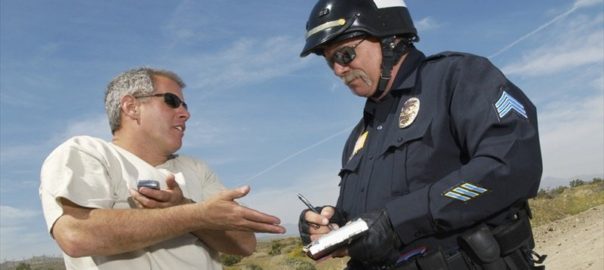Dunaway v. New York
U.S. Supreme Court
442 U.S. 200 (1979)
Decided on June 5, 1979
Throw-Back-Thursday Blog Post.
This week we consider another classic in the criminal law arena: Dunaway v. New York was decided in light of Brown v. Illinois, 422 U.S. 590. The Court’s finding would, like Mapp, transform the way we do business on a daily basis in criminal courts throughout the United States. Reading through the Court’s analysis again was a refreshing reminder of the parameters of the Dunaway hearings and the rule of admissibility of statements in light of a Fourth Amendment violation despite the police administering Miranda warnings.
Issue: whether statements and sketches that were taken at a police station must be suppressed because of the unlawful detention of the defendant where he was brought to the police station and interrogated and whether the illegal detention was sufficiently attenuated to permit the use of the statements at trial.
Holding: The U.S. Supreme Court held that when police unconstitutionally seize and detain an individual for interrogation without probable cause, statements made by that individual must be suppressed regardless of giving proper Miranda warnings or voluntariness in the Fifth Amendment sense. Law enforcement may not violate the Fourth Amendment with impunity, safe in the knowledge that they could wash their hands in the procedural safeguards of the Fifth.
Facts: A Rochester, New York detective questioned an inmate at a jail who allegedly had information about an attempted robbery and homicide in which the detective believed petitioner Dunaway was involved. Although the information was not enough for an arrest warrant, Dunaway was taken into custody where he was interrogated. He was told that if he attempted to leave, he would be physically restrained.
After being read his Miranda rights, Dunaway waived his right to counsel and supplied the detectives with self-incriminating statements and illustrations. Before trial, Dunaway moved to have the self-incriminating evidence suppressed, but the motion was denied and Dunaway was convicted.
The Rule In Brown v. Illinois
The U.S. Supreme Court vacated the conviction in light of Brown v. Illinois, 422 U.S. 590 (1975), where the Supreme Court held that there is no per se rule that Miranda warnings provide a cure-all for Fourth Amendment violations when incriminating statements result from custodial interrogation following an arrest on less than probable cause. The trial court granted Dunaway’s motion to suppress on remand, but the Appellate Division reversed. The Appellate Division reasoned that even if police lack probable cause for an arrest, they could still detain an individual under reasonable suspicion for questioning under “carefully controlled” conditions that do not violate the Fifth and Sixth Amendment rights.
The petitioner in Brown, like petitioner Dunaway, made inculpatory statements after receiving Miranda warnings during custodial interrogation following his seizure—in that case a formal arrest—on less than probable cause. Brown’s motion to suppress the statements was also denied and the statements were used to convict him. Although the Illinois Supreme Court recognized that Brown’s arrest was unlawful, it affirmed the admission of the statements on the ground that the giving of Miranda warnings served to break the causal connection between the illegal arrest and the giving of the statements. This Court reversed, holding that the Illinois courts erred in adopting a per se rule that Miranda warnings in and of themselves sufficed to cure the Fourth Amendment violation; rather the Court held that in order to use such statements, the prosecution must show not only that the statements meet the Fifth Amendment voluntariness standard, but also that the causal connection between the statements and the illegal arrest is broken sufficiently to purge the primary taint of the illegal arrest in light of the distinct policies and interests of the Fourth Amendment.
The Case Was Remanded To The New York Court of Appeals And Then To The Trial Court
In compliance with the remand, the New York Court of Appeals directed the Monroe County Court to make further factual findings.
On remand, the County Court in Rochester held that the factual predicate in this case did not amount to probable cause sufficient to support the arrest of the defendant and that the Miranda warnings by themselves did not purge the taint of the defendant’s illegal seizure, and granted the motion to suppress. The Appellate Division reversed finding that the taint of the illegal detention was sufficiently attenuated to allow the admission of his statements and sketches, emphasizing that the petitioner was never threatened or abused by the police. The Court of Appeals dismissed the petition for leave to appeal and the United States Supreme Court granted certiorari.
Analysis: Just four years prior, the Supreme Court decided that the Miranda warning is not a cure-all for Fourth Amendment violations when incriminating statements result from custodial interrogation following an arrest on less than probable cause. Brown v. Illinois, 422 U.S. 590 (1975). The Brown Court further ruled that for such obtained statements to be admissible, the prosecution would need to prove that those statements met voluntariness standards under the Fifth Amendment and that they were “sufficiently an act of free will to purge the primary taint” in light of the Fourth Amendment.
Miranda Warnings Were Proper
Although in agreement that there was no probable cause, the State purported that Dunaway’s seizure did not amount to an arrest and that because police had “reasonable suspicion,” questioning was permissible under the Fourth Amendment. The Supreme Court rejected this argument, concluding that while no “arrest” technically took place, the way the detectives treated Dunaway was indistinguishable from an official arrest, which amounted to an unlawful seizure under the Fourth Amendment.
The New York courts have consistently held, and petitioner does not contest, that proper Miranda warnings were given and that his statements were “voluntary” for purposes of the Fifth Amendment. But Brown v. Illinois, supra, settled that [t]he exclusionary rule, . . . when utilized to effectuate the Fourth Amendment, serves interests and policies that are distinct from those it serves under the Fifth,” 422 U.S., at 601, 95 S.Ct., at 2260, and held therefore that “Miranda warnings, and the exclusion of a confession made without them, do not alone sufficiently deter a Fourth Amendment violation.” Ibid.
Miranda Does Not Attenuate The Fourth Amendment Violation
“If Miranda warnings, by themselves, were held to attenuate the taint of an unconstitutional arrest, regardless of how wanton and purposeful the Fourth Amendment violation, the effect of the exclusionary rule would be substantially diluted. . . . Arrests made without warrant or without probable cause, for questioning or ‘investigation,’ would be encouraged by the knowledge that evidence derived therefrom could well be made admissible at trial by the simple expedient of giving Miranda warnings.” Id., at 602, 95 S.Ct., at 2261.
Consequently, although a confession after proper Miranda warnings may be found “voluntary” for purposes of the Fifth Amendment,18 this type of “voluntariness” is merely a “threshold requirement” for Fourth Amendment analysis, 422 U.S., at 604, 95 S.Ct., at 2262. Indeed, if the Fifth Amendment has been violated, the Fourth Amendment issue would not have to be reached.
The Test From Brown v. Illinois
Beyond this threshold requirement, Brown articulated a test designed to vindicate the “distinct policies and interests of the Fourth Amendment.
When there is a close causal connection between the illegal seizure and the confession, not only is exclusion of the evidence more likely to deter similar police misconduct in the future, but also use of the evidence is more likely to compromise the integrity of the courts.
Brown identified several factors to be considered “in determining whether the confession is obtained by exploitation of an illegal arrest[:t]he temporal proximity of the arrest and the confession, the presence of intervening circumstances, . . . and, particularly, the purpose and flagrancy of the official misconduct . . . . And the burden of showing admissibility rests, of course, on the prosecution.
No intervening events broke the connection between petitioner’s illegal detention and his confession. To admit petitioner’s confession in such a case would allow “law enforcement officers to violate the Fourth Amendment with impunity, safe in the knowledge that they could wash their hands in the ‘procedural safeguards’ of the Fifth.
The Supreme Court looked to the exclusionary rule, which prohibits unconstitutionally obtained evidence from being used in state and federal court, and determined that even when Miranda warnings are given and statements are voluntarily under the Fifth Amendment, if an individual was seized illegally under the Fourth Amendment, the elicited statements resulting from the custodial interrogation must be suppressed.


